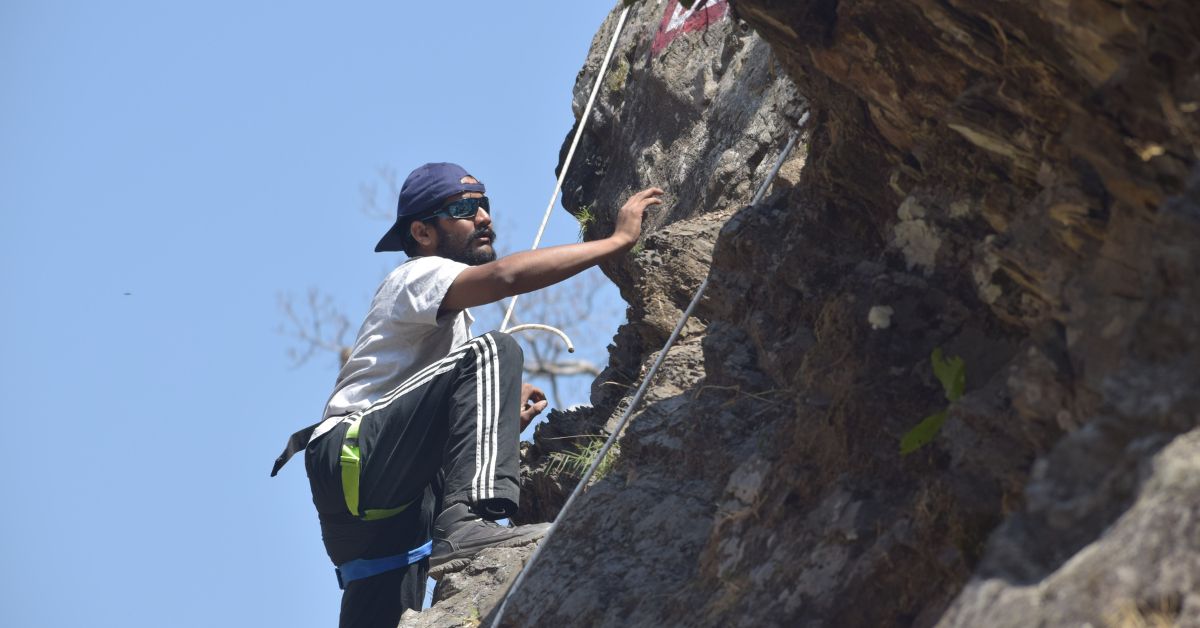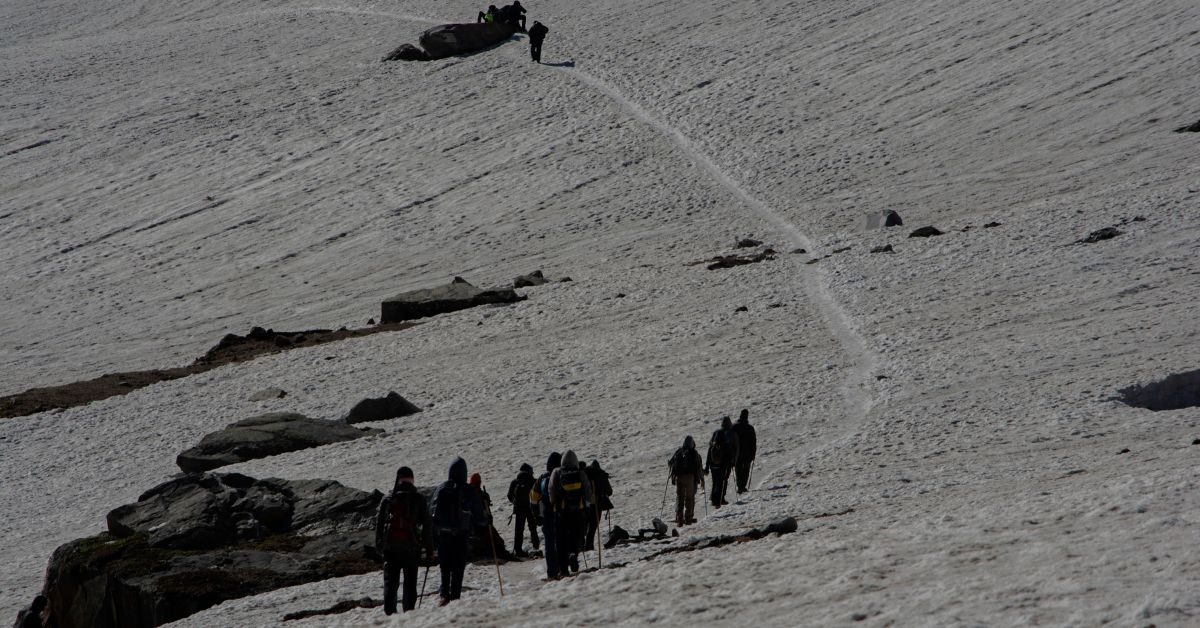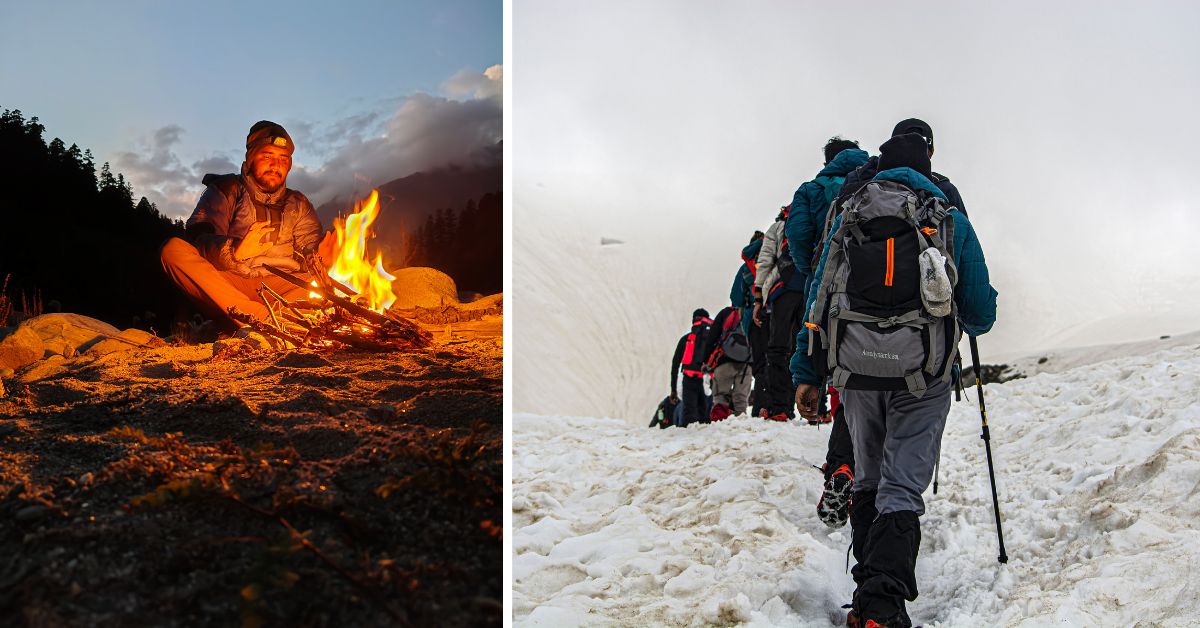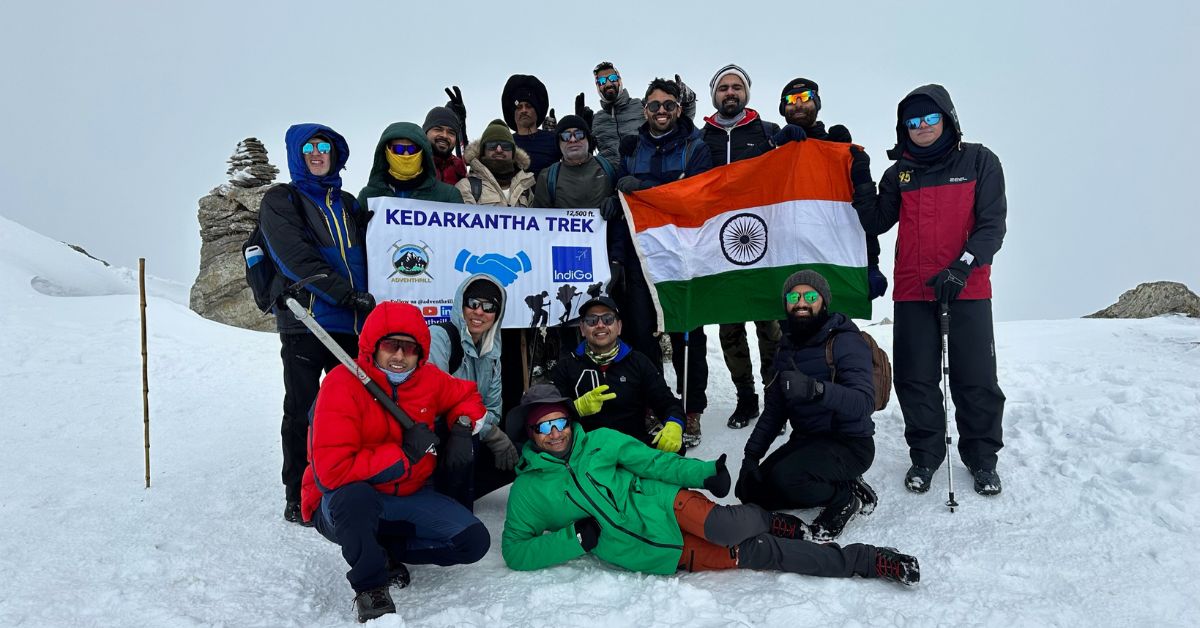He Quit Banking at 23 for the Mountains. Now He Runs a Rs 10 Cr Trekking Company
For most Indians, a secure corporate job with a good salary is often seen as the ultimate dream, a safe, stable path to a successful life. But for Vijay Pratap Singh (31), true fulfilment lay beyond cubicles and office corridors.
At just 23, he quit his banking job to pursue a different kind of climb: founding ‘AdvenThrill’, an adventure travel company on a mission to place India firmly on the global trekking map.
Born in a small UP village, Bhukamp Sikar, Vijay’s early education was rooted in a Hindi-medium school. “I studied till Class 8 in my village, but in 2005, I moved to Dehradun for my studies.”
Although he describes himself as an average student, it was sports and nature that drew him in. Dehradun’s proximity to the mountains ignited a passion that never left him. “I used to escape into forests and mountains whenever I could,” Vijay tells The Better India.
In 2012, he graduated in Information Technology (IT) from Dev Bhoomi Uttarakhand University and began working with HCL in Hyderabad. However, adjusting to life in the southern city proved tough. “It was difficult to manage food and the language,” he recalls. At the time, nature became his solace, and weekends offered him the perfect escape into the wilderness. “I was interested in wildlife photography at the time, so I used to explore nearby forests.”
 Vijay found solace in trekking and nature wherever he went.
Vijay found solace in trekking and nature wherever he went.
Eager to grow professionally, Vijay took the MAT (Management Aptitude Test) and pursued a master’s in international business from Chandigarh University. During his final year, he was working with Kotak Mahindra Bank in Pune, where he gained a front-row seat to how businesses operated. “Through those client conversations, I learned about business strategies, challenges, and management,” he shares.
Despite doing well in his banking role, a piece of his heart remained in the mountains. “I continued hiking and trekking with my friends,” says Vijay, who refused to let go of his connection with the outdoors.
But, Vijay wasn’t just trekking for leisure. He was planning something bigger.
Taking the leap at 23
“AdvenThrill is an outdoor adventure programme that organises treks for college students, working professionals or anyone interested, along with a few learning-based activities,” Vijay explains. The vision for AdvenThrill had been years in the making — and by the time he quit his job, he knew exactly how it would work.
Starting an adventure company wasn’t an impulsive decision. It was something Vijay had already mapped out — a well-calculated risk, backed by experience and a deep-rooted passion for the mountains. “Before I quit my job, I had already planned what the company would be and how it would function,” he says.
With the help of his IT friends, Vijay created a website and social media handles for AdvenThrill, so that the first wheel — trek booking — could start chugging. “I also hired a few management interns to ensure the smooth running of the company. But I was handling 80% of the work myself,” he adds.
 Vijay had a concrete plan before establishing his adventure company.
Vijay had a concrete plan before establishing his adventure company.
Slowly, support started pouring in from trekkers. Local communities in Dehradun and across India also showed belief in his vision, offering help and encouragement along the way.
In 2020, the real test came. The outbreak of the COVID-19 pandemic brought the travel industry to a halt.
“We were four years into the business, and I had a lot of connections and plans ready to go, but we had to pause,” he recalls. Determined to stay relevant and in the game, Vijay organised virtual marathons (online events where participants run at their own location and submit their results digitally) and rewarded participants. “That’s how we spread awareness about AdvenThrill during a time when outdoor adventures weren’t possible,” he shares.
Leading with experience and safety
Vijay’s journey as a trek leader began in December 2016 with a group of 12 MBBS students from Ram Manohar Lohia Hospital, New Delhi. “We took them on a trek to Chopta Tungnath in the snow; it was my first time handling a group,” he shares, adding that the experience taught him key lessons in logistics and leadership. Many from that first group still trek with AdvenThrill today.
Building on that experience, Vijay knew he had to deepen his expertise if he wanted to scale the business responsibly. To strengthen his skills, understanding the technicalities of the sport was crucial. So, he completed a mountaineering course at the Nehru Institute of Mountaineering. Over time, he built a network of trained trek leaders, including ex-Army mentors.
“We have put together a close-knit team of 10 members who have undergone basic and advanced mountaineering courses, search and rescue training, and some are certified first-aid responders.”
 AdvenThrill is equipped with trained trekkers and responders.
AdvenThrill is equipped with trained trekkers and responders.
In 2024, Vijay led a trek for blind Indian football players in Dehradun. “The team was very accommodating and arranged the trek based on the requirements of the visually impaired trekkers,” says Naresh Singh Nayal, the players’ coach and an ex-member of the Indian Air Force.
“My wife and daughter had also taken up a trek with Vijay’s company, and they appreciated the experience as well,” adds Naresh, stating how people of different ages enjoy the trek.
Since trekking is seasonal, the company also works with freelancers and pays them based on the workload, which varies depending on group size and trek frequency.
What goes into building an adventure travel company
Starting a trekking company isn’t as simple as picking a trail. It requires multiple layers of registration and compliance. “First, we had to register as a sole proprietorship or a private limited company,” shares Vijay. They eventually went with the private limited company structure, which offered more flexibility and credibility as the business grew.
“The owner must also complete mountaineering courses to prove their experience in the field. We also needed a core team of four to five members certified in basic, advanced, and search-and-rescue training,” he explains.
Vijay registered his company with the Uttarakhand Tourism Department, and also with the Indian Mountaineering Foundation, as required for expeditions above 5,000 metres. “Being a member of the foundation allows us to plan high-altitude expeditions while ensuring safety at the backend.”
Is trekking everyone’s cup of tea?
Not everyone can sign up for a trek without preparation. “Anyone can apply, but they must submit medical test reports from a certified doctor,” Vijay explains. These reports are verified before bookings are confirmed. “That’s why we only take registrations a month in advance — to ensure there’s ample time to assess their fitness,” he shares.
Trekkers are also advised to follow a 20-day fitness routine at home before the trek to prepare for its physical demands. “Every day before the trek begins, we conduct medical check-ups to monitor oxygen levels, blood pressure, and other vitals,” he adds. If anyone is found unfit, they are cared for at the base camp.
At AdvenThrill, treks are classified into three levels:
- Beginner (up to 3,500 metres): Suitable for those who can walk for four to five hours daily.
- Moderate (above 3,500 metres): Requires prior experience in at least five beginner-level treks.
- Difficult (above 5,000 metres): Open only to individuals with a mountaineering course certification.
For a group of 15 trekkers, the company assigns three trek leaders — one with a basic mountaineering course (assistant trek leader), one with an advanced mountaineering qualification (trek leader), and one specialising in search and rescue. “We also send a cook, two helpers, porters, etc. In total, we have around 12 staff members ensuring a safe and enjoyable trek,” Vijay shares.
Putting India’s trekking potential on the world stage
For Vijay, mountaineering is more than a business; it’s a mission. He aims to put India on the global trekking map while prioritising safety and ethical practices. “Many trekking businesses skip safety standards,” he says. “It’s important to have qualified trek leaders who can guide participants properly.”
“Mountains will be here for a long time — you can visit them frequently. But life is not like that. Safety should always come first.”
– Vijay
 AdvenThrill aims to put Indian mountaineering on the global map.
AdvenThrill aims to put Indian mountaineering on the global map.
In the past eight years, Vijay’s company has organised treks across Ladakh, Himachal Pradesh, Uttarakhand, Sikkim, and Nepal, generating a collective revenue of Rs 10 crore, with Rs 45 lakh in the last year alone. “We focus on quality over quantity, limiting ourselves to 10 to 20 treks per year to ensure the best experience,” he shares.
Looking ahead, Vijay wants to map and open new, unexplored trekking routes to bring more recognition and sustainable income to local communities. “By developing these trails, we can bring recognition to India’s vast trekking potential,” he explains. It’s a slow process, involving advanced GPS mapping and extensive groundwork, but one that could transform the trekking landscape in India.
Vijay firmly believes that India has the potential to rival global trekking destinations if the right safety measures and infrastructure are put in place. “If we can address the gaps in the trekking sector, such as setting up a robust rescue system, we can attract more international trekkers.”
With every mapped trail and mindful expedition, Vijay isn’t just guiding trekkers — he’s rewriting the future of Indian mountaineering. For a young man who once sought escape in the forests of Dehradun, this journey has become a way to lead others back to the wild — with purpose, safety, and heart.
Edited by Khushi Arora; All images courtesy Vijay Pratap Singh
News